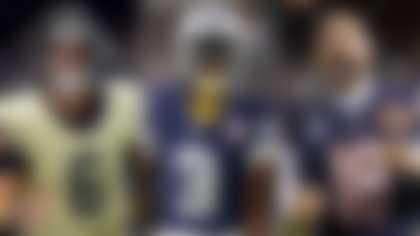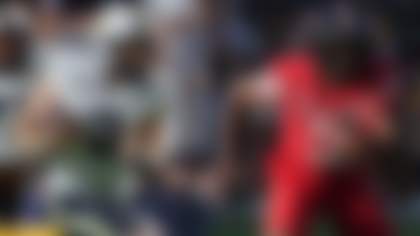INDIANAPOLIS -- For almost a month now, folks around Peyton Manning have spoken, on and off the record, about how the ailing quarterback is improving in his effort to return to football in 2012.
If that's true -- something you get mixed messages on, depending on whom you talk to -- then there's plenty of reason to be optimistic that Manning will, in fact, be ready to go when the next NFL season begins. Or at the very least, there should be some evidence of where he is for prospective employers to review.
Earlier this month, Manning's agent, Tom Condon, told me the nerves were regenerating in the quarterback's arm. I asked again about it, and Condon responded, "The regeneration is continuing, his strength is much better, and so we feel really positive about it and he's determined to play."
At this point, the nerve regeneration is the key. Manning's ability to recover will be based on his ability to regain strength in his right triceps and his grip; and his ability to regain that strength is dependent on the nerve regeneration. The good news is that once the nerve starts to regenerate, according to medical people with knowledge of this situation, continued improvement can be expected.
"Usually there's a long dormant period, where nothing's happening," said one orthopedic surgeon with knowledge of the injury. "Then you start to see that improvement. Sometimes the nerve can be asleep for months, and then you see a flicker, and then accelerated recovery. It's not unusual to see a long dormant period, then the re-nervation period start and go to steady recovery."
He then added, "Once it's significantly improving, the nerve's not going to degenerate again."
What we know about Manning's recovery is that the spinal fusion has taken, and he's been cleared to play. That doesn't mean he can play quarterback. It simply means he can, physically, go out there and take contact. The rest is about being able to throw like an NFL quarterback again. We know Manning's been throwing. The question is whether or not he's improving. Condon did say, "He's had very significant improvement from the time of the operation until now." But the key isn't the improvement from the time of the surgery to now, it's the rate of improvement from the beginning of the nerve regeneration, presuming it's underway, to now. If there has been kind of improvement Condon's talking about, then Manning would be out of what the doctor calls the "dormant period." Which, again, would be great news.
Harrison: Extreme makeover
A year without Peyton Manning exposed all of the Colts' flaws. Elliot Harrison says the rebuilding process will certainly take time. **More ...**
"What that means is there's not permanent blocking of the nerve signal," the surgeon said. "If he's getting better, then the wires are working. Now, it's a matter of gaining strength and fine motor activity to return. The question is the pace of recovery for a 36-year-old guy, he's got a ticking clock. But you can plot the trajectory of his improvement over the last several months, and if you see a significant increase in strength the last few weeks, you can be more optimistic.
"You can plot the level of function and strength compared to the opposite arm, and plot it out to where he would be based on the current level of improvement on March 8. And if that plots out to over 90 percent by September 1, teams would be crazy not to take a shot on him. If it's a slower rate, that's a different story."
Theoretically, such a chart would help any team looking at Manning -- and could help the quarterback land a job earlier, if and when the Colts cut him.
Or it could scare teams away.
Either way, one thing that seems certain is that the neck has been put to bed.
The fact that he was cleared, according to doctors, means Manning has reached the critical dimension needed in the spinal canal to take a hit. So any concern over there being a hereditary problem -- given older brother Cooper's spinal stenosis -- or there being a chronic issue can be allayed by the fact that a) his surgery was successful, and b) he was cleared.
"If you have a fusion, then you know, especially at his age, there's a good chance that over the course of years the levels above and below the fusion in the neck will become arthritic, because the motion transfers to the sections above and below," the surgeon said. "But what's seen in pro football, over the course of a player's career, since it's relatively short compared to the rest of your life, there's no significant increase in risk.
"He's 36. Let's say he goes great until he's 40. Things aren't going to rapidly degenerate to the point where he's right back on the operating table. By the time he's 60, there's a good chance that happens."
The bottom line: If Peyton Manning is showing real improvement in his arm strength, as a result of the nerve regeneration, then it becomes a matter of how quickly he's getting better. And at that point, his return is no longer an "if" -- it's a "when."
The uncertainty is how soon he'll be able to return to football. Very few folks know.
But there's a chance that, at this point, based on the above, Peyton Manning himself may have a halfway decent idea.
Follow Albert Breer on Twitter @AlbertBreer











